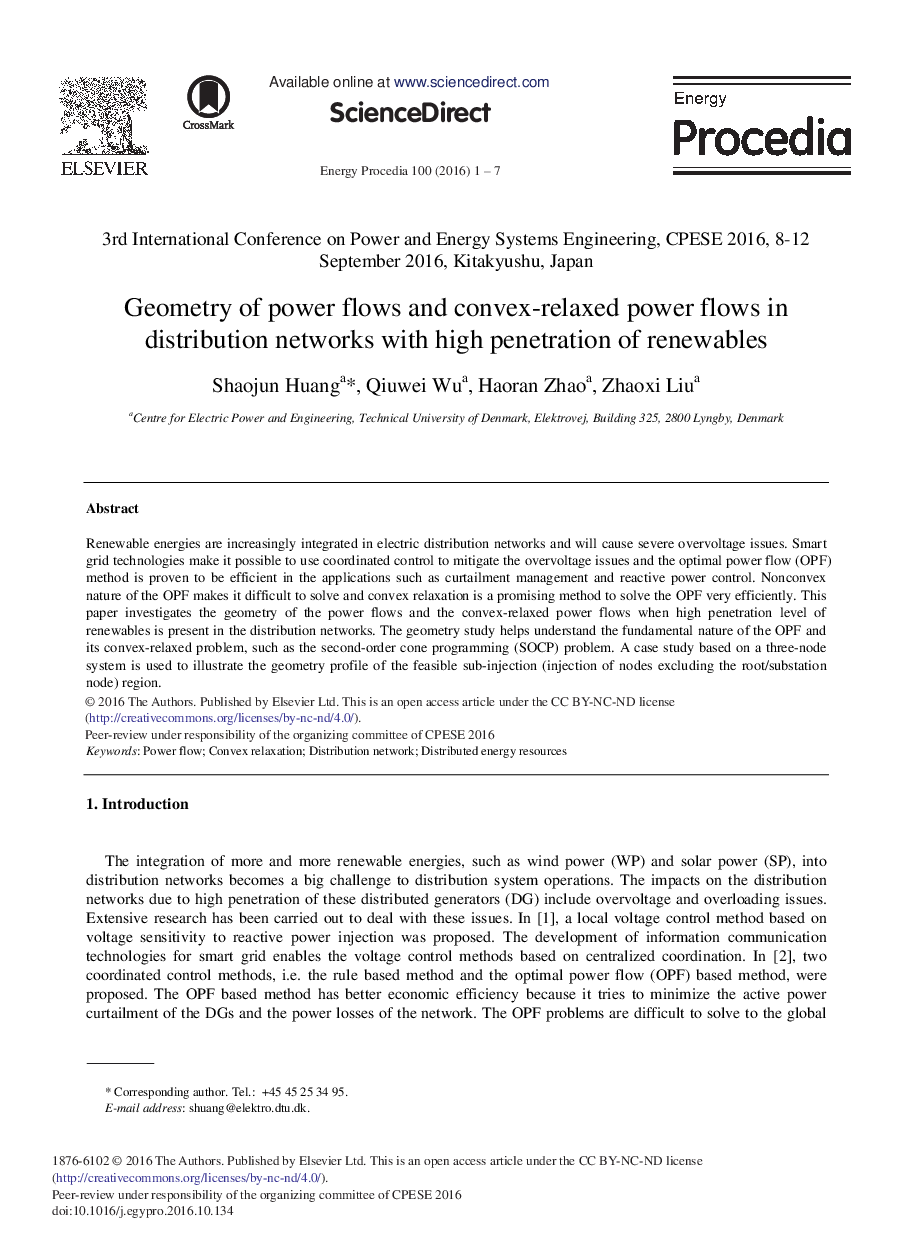| Article ID | Journal | Published Year | Pages | File Type |
|---|---|---|---|---|
| 5446072 | Energy Procedia | 2016 | 7 Pages |
Abstract
Renewable energies are increasingly integrated in electric distribution networks and will cause severe overvoltage issues. Smart grid technologies make it possible to use coordinated control to mitigate the overvoltage issues and the optimal power flow (OPF) method is proven to be efficient in the applications such as curtailment management and reactive power control. Nonconvex nature of the OPF makes it difficult to solve and convex relaxation is a promising method to solve the OPF very efficiently. This paper investigates the geometry of the power flows and the convex-relaxed power flows when high penetration level of renewables is present in the distribution networks. The geometry study helps understand the fundamental nature of the OPF and its convex-relaxed problem, such as the second-order cone programming (SOCP) problem. A case study based on a three-node system is used to illustrate the geometry profile of the feasible sub-injection (injection of nodes excluding the root/substation node) region.
Related Topics
Physical Sciences and Engineering
Energy
Energy (General)
Authors
Shaojun Huang, Qiuwei Wu, Haoran Zhao, Zhaoxi Liu,
